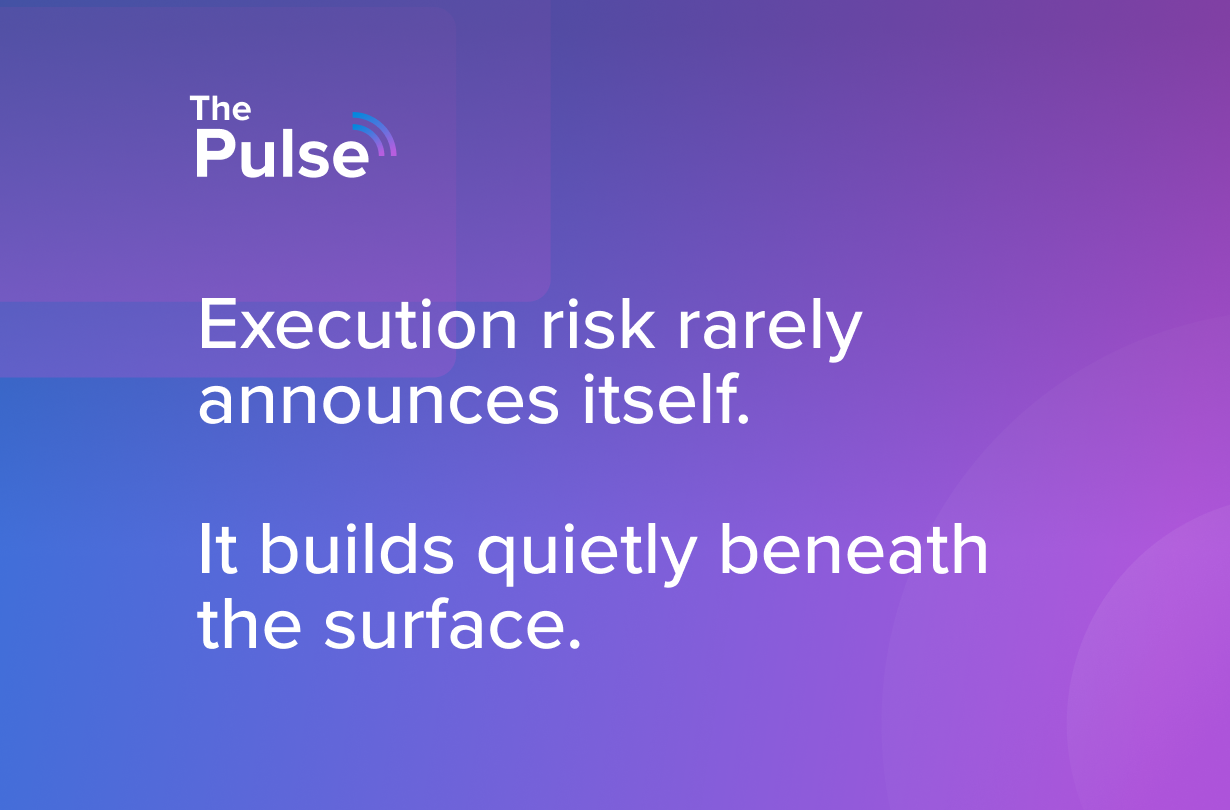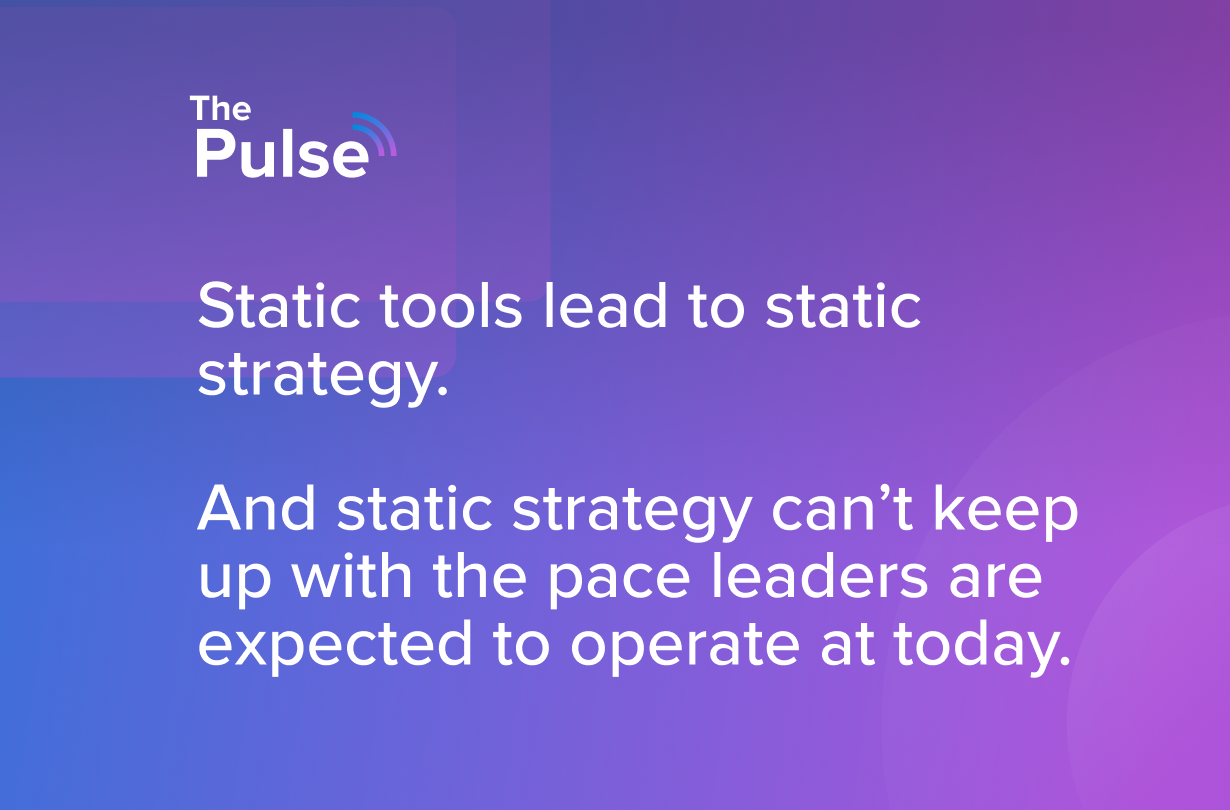
Today’s leading companies use Dynamic Planning to adapt to change, make better decisions, and move faster together.
For an overview how you can use Dynamic Planning to make execution a competitive advantage, check out our upcoming webinar 8 Ways to Amplify Your 2023 Strategic Plan.
For a comprehensive overview on how to Introduce Dynamic Planning to Your Company, we've written a 3 part series. Specifically, the articles included in this 3 part series are:
- Building the Case for Dynamic Planning
- Elevating from Traditional Planning to Dynamic Planning
- The Role of Strategy and Operations in Dynamic Planning
If you’d like to connect with our team to learn more about how Elate is partnering alongside leading Strategy and Operations teams to make the transition from Traditional Planning to Dynamic Planning, reach out to us today!
The Role of Strategy and Operations in Dynamic Planning
From building a customer-centric culture to unlocking your strategy, Strategy and Operations Leaders often hold the keys to long-term, sustainable growth. So it isn’t a surprise that companies are investing earlier and more aggressively into Strategy and Operations teams to lead them through the shifting landscape of what growth will look like over the coming years.
As most companies have seen, the dynamics in today’s marketplace mean that companies are looking for healthier, more effective ways to scale, rather than growth at all costs. This is why Strategic Planning and Execution has never been more important than it is today.
But how does a company go about evaluating the current state of their Strategic Planning process, and evolving it in a way that can unlock growth across the company?
In this three-part series, we've highlighted why companies should go about Building the Case for Dynamic Planning, as well as how they actually go about Elevating from Traditional Planning to Dynamic Planning. In the final part of the series, we will press further into the role of Strategy and Operations plays in Dynamic Planning.
From communicating the plan to driving accountability, Strategy and Operations plays a core role in Dynamic Planning and the impact it has across a company.
Guiding the Dynamic Planning Journey
To successfully make the transition to Dynamic Planning as the framework for growth, Strategy and Operations must first set the foundation for driving alignment and buy-in at the leadership level. This often starts with the Executive Team offsite, typically held in the fall, that sets the stage for the year to come.
This session serves as the forum for aligning the team on long-term direction and annual Themes. However, having a roadmap for what comes after the offsite can be just as important as the offsite itself. Ensuring team members are aligned is key to getting buy-in and the necessary approval along every step of the process.

Once you’ve created the roadmap to bring Dynamic Planning to life, don’t forget that it will rarely go exactly as planned. As is the case with most things at high growth companies, things change, opportunities arise, and timelines need to be adjusted. That’s okay! Your company is not alone in experiencing this.
As long as you are hitting milestones along the way and not pushing far from your desired kickoff, then it’s okay to shift accordingly. Although we’re biased, this is where a solution will also help ensure team’s are accountable and proactively communicating to ensure everyone stays on course.
Planning for the Executive Offsite
One important part of this process we’d be remiss not to touch on is setting the stage for the Executive Offsite itself. We’ve seen a lot of companies lose focus and have their Dynamic Planning structure go sideways because of a poorly planned Executive Offsite.
This is where Strategy and Operations Leaders can make a huge impact. Planning the executive offsite effectively can help drive meaningful conversation and progress around finalizing priorities for the Dynamic Plan.
At Elate, we’ve seen three common areas of success how Strategy & Ops Leaders can help set the stage for a successful offsite:
- Getting Outside the Office
- Setting a Clear Agenda
- Making Space to Think

With your Executive Offsite agenda set and your Dynamic Planning roadmap in place, we can now go about building the plan in a way that creates company-wide alignment.
Aligning Teams and Key Stakeholders
Unlike any other functional leader in the business, Strategy and Operations teams have visibility across each department with an understanding of how everything is connected. From overseeing the successful delivery of strategic initiatives to building teams from zero to one, Strategy and Operations Leaders are exposed to almost every area of the business.
This unique perspective allows them to connect long-term vision with day-to-day execution in a way that can bring the company’s strategy to life. This level of visibility is critical to unlocking a company’s strategy, as well as building a Dynamic Plan that can align the team and accelerate growth.
At Elate, this alignment comes in two forms:
- First, easy and intuitive visibility that allows employees to understand how their work contributes to the long-term direction.
- Second, in the Relationship Mapping that can surface insights in a proactive way like never before.
Relationship Mapping is critical to success, and is often led by Strategy and Operations. With visibility into all aspects of the business, Strategy and Operations can drive collaboration across teams, host enablement sessions, and ultimately approve Relationships in a way to build the necessary infrastructure that supports a Dynamic Plan’s path to success.
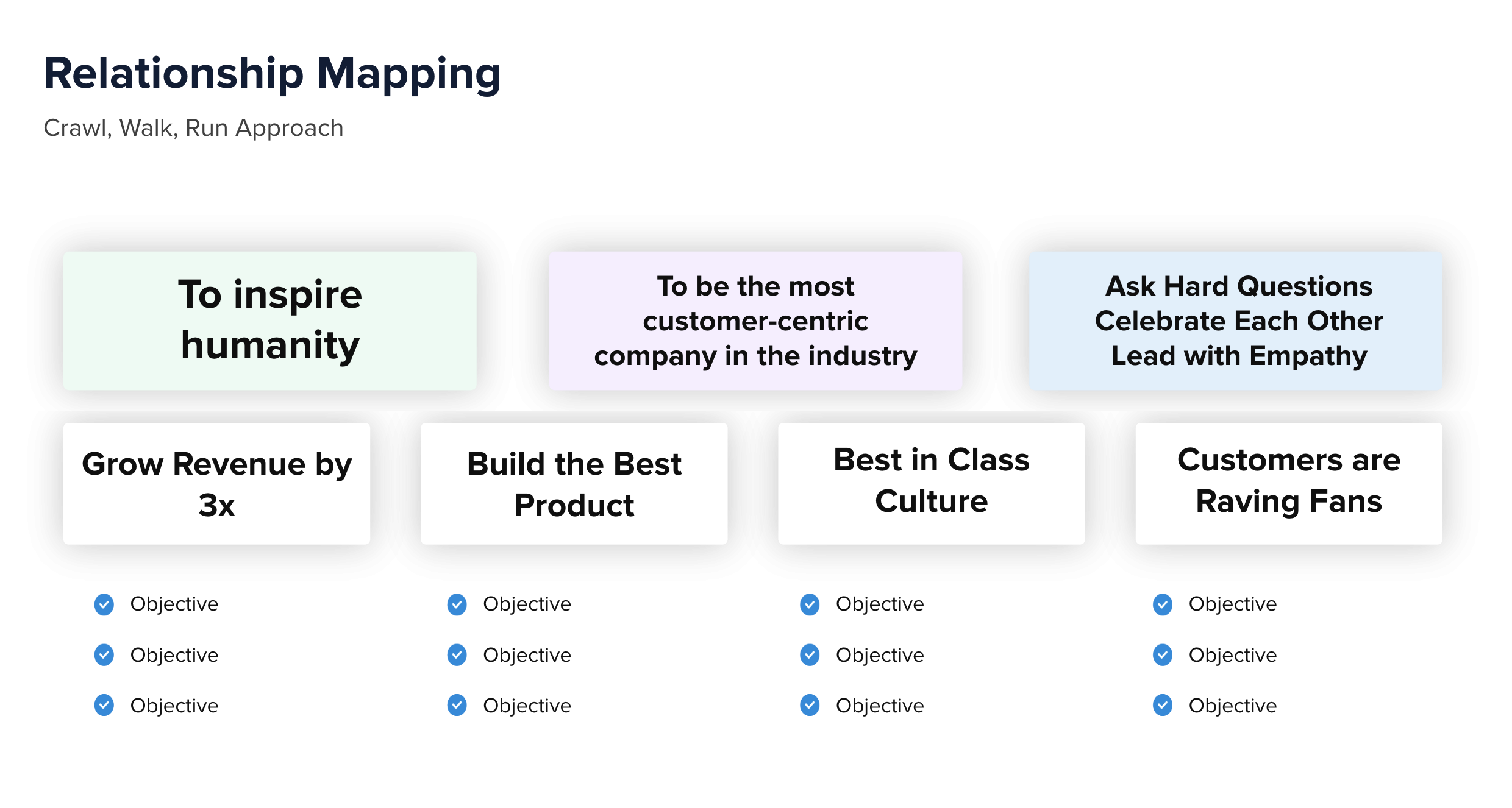
We recommend that for the first two quarters after rolling out your Dynamic Planning framework, Strategy and Operations Teams work closely with other departments to ensure Objectives are aligned, connected, and appropriately mapped. After two quarters, Strategy and Operations can start to shift into more of an oversight role, providing feedback and support, but not owning the entirety of the process.
By creating a culture that embraces the process of connecting dependencies, building Relationships, and mapping your Dynamic Plan throughout the company, teams will ultimately be set up to execute at the highest degree possible.
Executing Your Dynamic Plan
You’ve got the buy-in, built your plan, and rolled it out to the company. Finally, we’ve come to the part where the rubber meets the road. Executing your plan. For Strategy and Operations Leaders, this is where all your hard work starts to pay off.
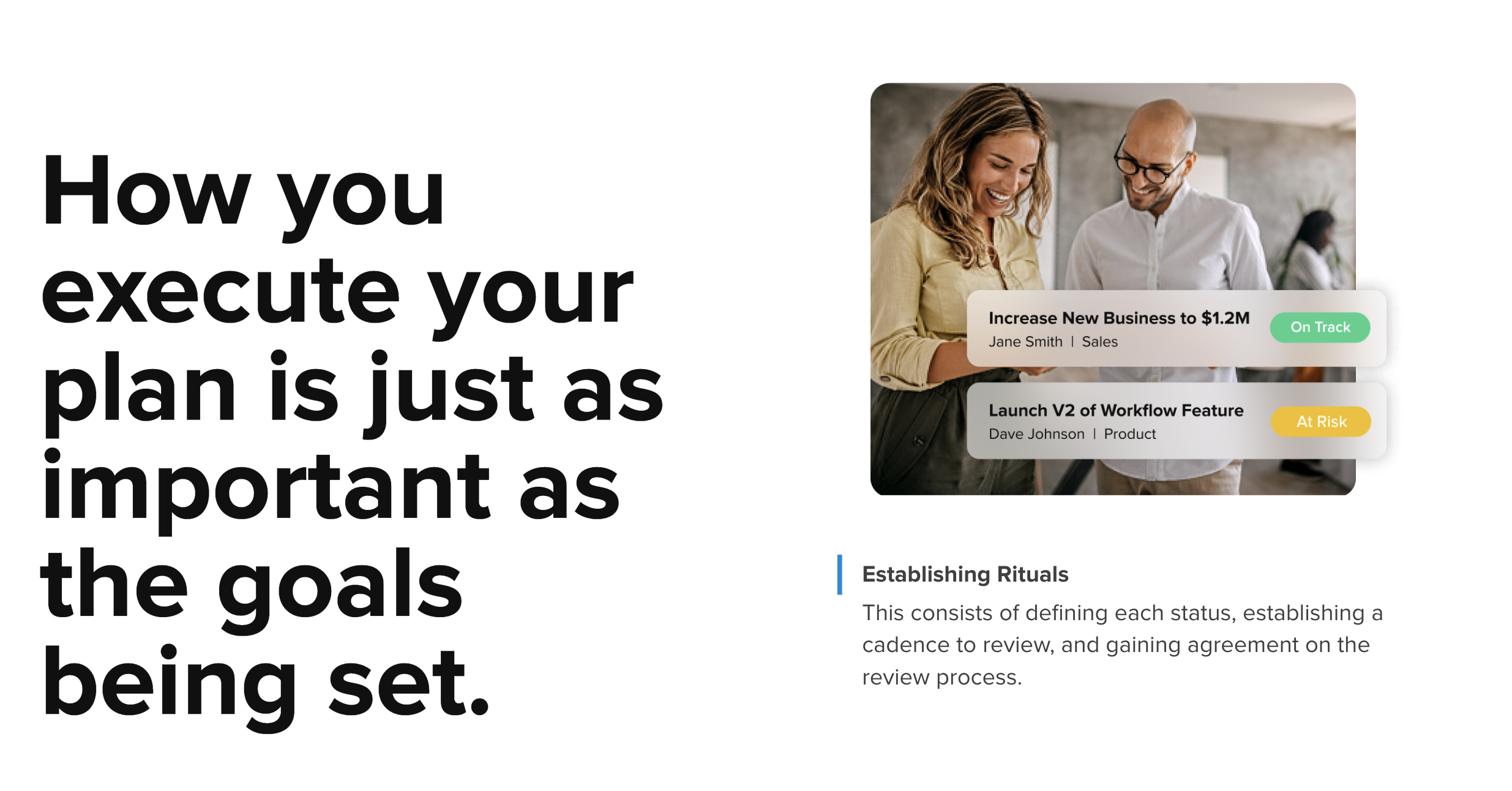
Unlike traditional strategic planning, Dynamic Planning allows execution to truly be a vehicle for growth. However, it’s important to clearly communicate how team members can ensure execution and track updates to proactively monitor the health of Objectives.
Establishing Rituals
This begins by setting a clear cadence for rituals or the rhythm for how, when, and where team members provide updates. It’s important that Strategy and Operations set the tone for this process, but also get buy-in from executive stakeholders to ensure there is alignment on the importance of establishing a rhythm review and updates. When communicating the importance of establishing rituals, there are a few important areas to focus on.

Again, it’s important to ensure the Leadership Team is aligned on the process and cadence. This process will serve them just as much as employees because it will allow the Leadership Team to identify trends, risks, or opportunities because of the clear communication provided bi-directionally with employees.
Further, Strategy and Operations should help set the forum for how these updates are reviewed. If team members feel like their updates are never even seen, then there is no value in them providing updates in the first place.
At Elate, we recommend setting two forums for these reviews:
- Team Reviews
- All Hands Meetings

As we shared in Part Two of the Series, reviewing your plan can be just as important to the evolution of it as the execution itself. But for the Leadership Team Reviews, often we see Strategy and Operations guiding that conversation with the following areas of focus:
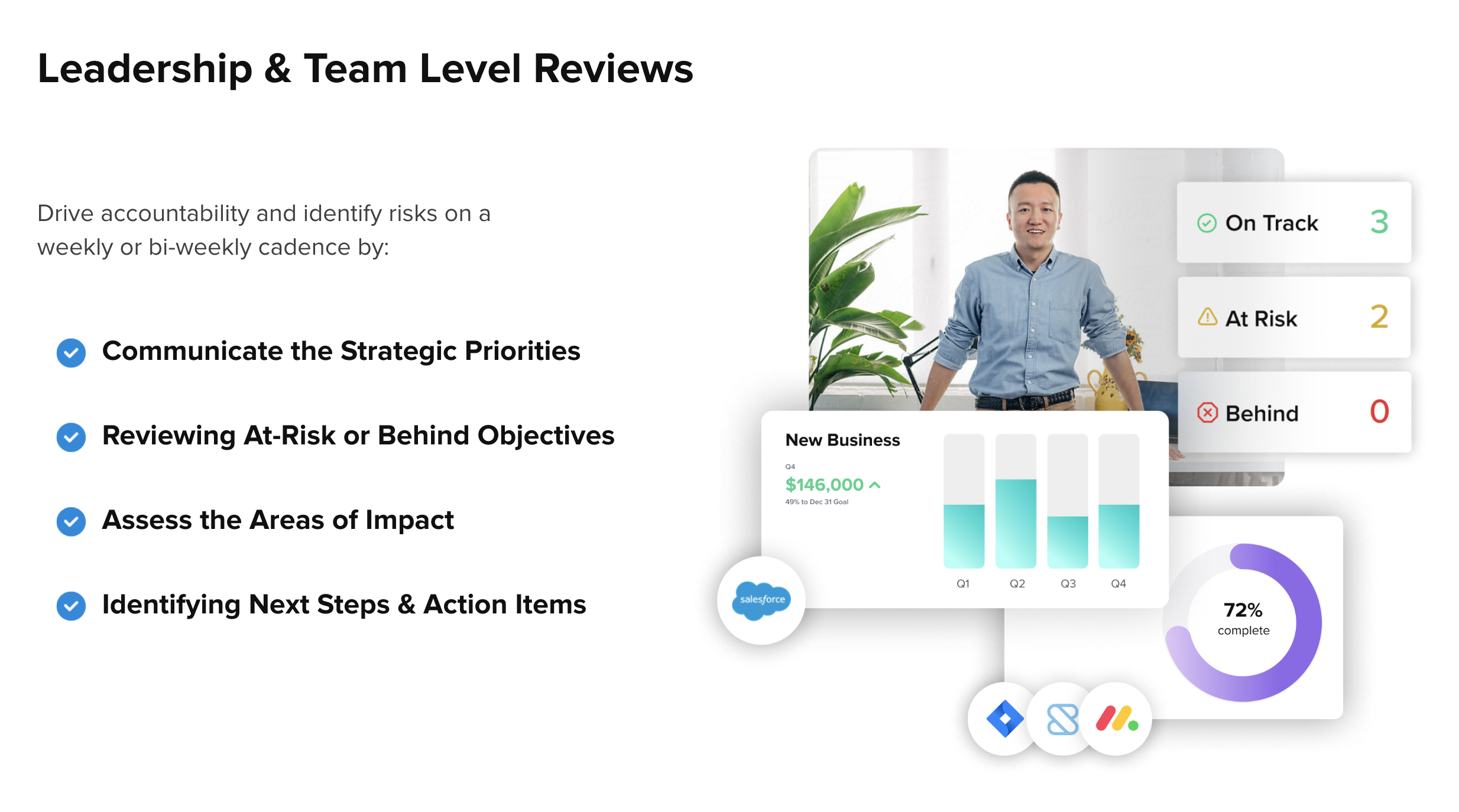
With a clear cadence for reviewing your Dynamic Plan, for the first time, Strategy and Operations Leaders can proactively drive conversation with a unified view of the Objectives, risks, and opportunities moving the business forward. Rather than spending endless cycles tracking down updates, get updates directly from owners to move faster and take action.
The Future of Planning is Dynamic
Rather than the traditional Strategic Planning process that is static and reactive, we believe that Dynamic Planning can drive behavior change across a company. From how you build and evolve your Strategic Plan to the way in which your teams execute the plan at the highest level possible, Dynamic Planning can serve as a framework to unlock growth.
Throughout this Three Part Series, Introducing Dynamic Planning to Your Company, we’ve touched on why companies should make the transition to Dynamic Planning, how they go about doing so, and the role of Strategy and Operations in the process. However, we know that we are only beginning to scratch the surface…
That’s why our team is here to help.
If you’d like to connect with our team to learn more about how Elate is partnering alongside leading Strategy and Operations teams to make the change from Traditional Planning to Dynamic Planning, reach out to us today! We’d love to partner alongside you to Unlock Your Strategy and fuel your company’s next phase of growth.
